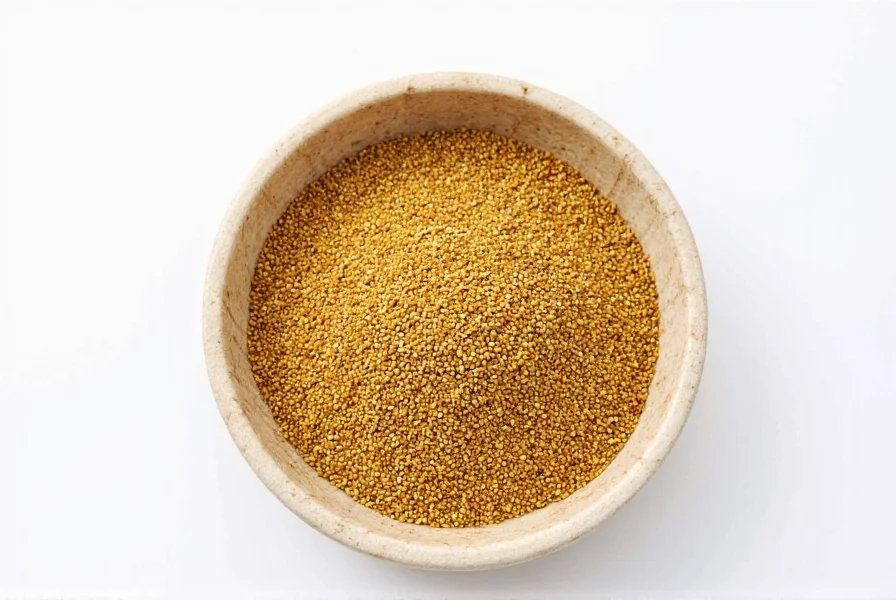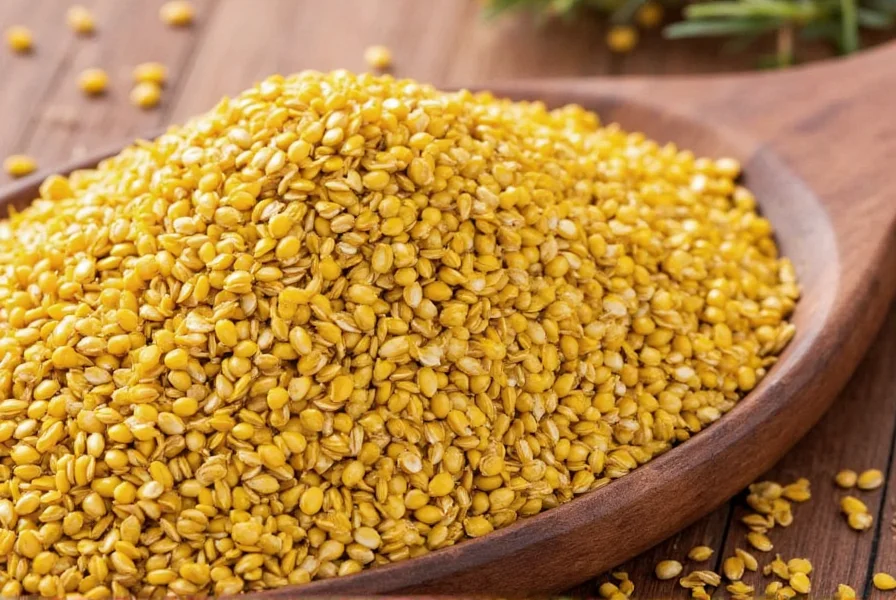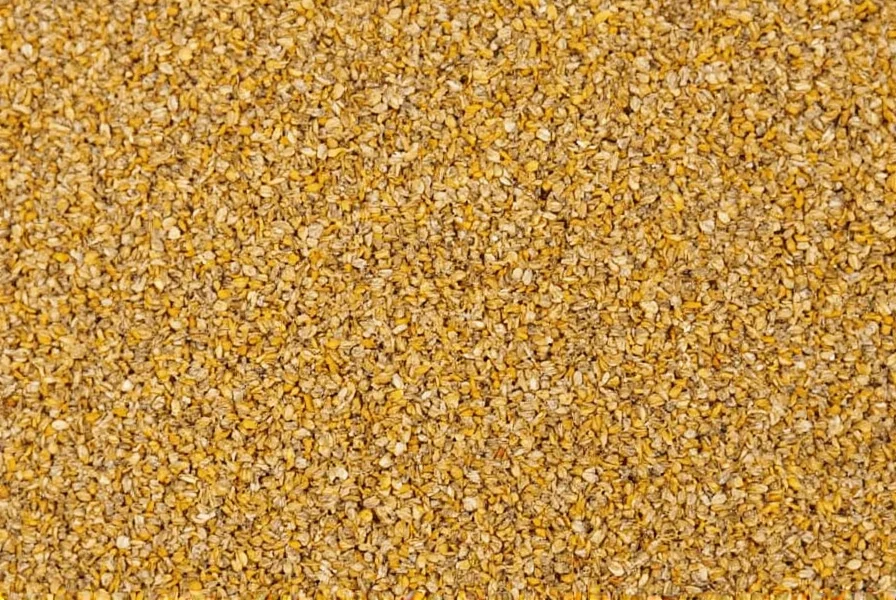Unlike commercial mustard powder which often contains anti-caking agents and may lose potency over time, freshly ground mustard seed delivers superior flavor complexity and aroma. When the seeds are ground, enzymes activate compounds that create that distinctive pungent kick characteristic of mustard.
What Exactly Is Ground Mustard Seed?
Ground mustard seed refers to whole mustard seeds (typically yellow, brown, or black varieties) that have been freshly milled into a fine powder. This differs from store-bought mustard powder, which is often a blend of ground seeds with additional ingredients like turmeric, salt, or anti-caking agents.
The three primary mustard seed varieties used for grinding include:
| Seed Type | Flavor Profile | Best Uses |
|---|---|---|
| Yellow Mustard Seeds | Mild, slightly tangy | Classic American mustard, salad dressings |
| Brown Mustard Seeds | Hotter, more pungent | Dijon-style mustards, Indian cuisine, pickling |
| Black Mustard Seeds | Most intense, sharp heat | Traditional European preparations, specialty mustards |
Why Freshly Ground Outperforms Pre-Packaged Powder
When considering ground mustard seed vs mustard powder, the key difference lies in flavor preservation. Whole seeds maintain their essential oils and enzymes until ground, while pre-ground products gradually lose potency. A study published in the Journal of Food Science found that ground mustard loses up to 60% of its volatile compounds within six months of processing.
Chefs who understand what is ground mustard seed used for appreciate its ability to provide:
- More complex flavor notes with subtle nuttiness
- Stronger pungency when mixed with liquid
- Customizable texture from fine to coarse grind
- Avoidance of additives found in commercial products
How to Use Ground Mustard Seed in Cooking
Understanding how to use ground mustard seed in cooking properly unlocks its full potential. The magic happens when the ground seeds come in contact with liquid, activating the enzyme myrosinase which creates that characteristic heat.
For best results when working with ground mustard seed recipes:
- Activate properly: Mix with cold water, vinegar, or wine and let sit for 10-15 minutes before using
- Control heat: Acidic liquids like vinegar create sharper heat, while dairy produces milder flavor
- Timing matters: Add early in cooking for milder flavor, later for more pronounced mustard notes
- Balance flavors: Pair with honey, sugar, or cream to counter excessive pungency

Practical Applications in the Kitchen
Professional chefs leverage ground mustard seed for specific culinary applications where ground mustard seed benefits shine:
Marinades and Brines
The enzymes in freshly ground mustard help tenderize proteins while adding complex flavor. Try mixing 2 tablespoons ground mustard seed with 1/4 cup vinegar, 2 tablespoons olive oil, and herbs for an exceptional meat marinade.
Spice Rubs
Ground mustard seed adheres well to meats and creates a flavorful crust when seared. Combine with paprika, garlic powder, and brown sugar for a versatile rub.
Traditional Sauces
Many European recipes specifically call for freshly ground mustard seed rather than prepared mustard. In German sauerkraut recipes, it provides authentic flavor that bottled mustard cannot replicate.
Storage Recommendations for Maximum Freshness
Proper storage is critical when learning how to store ground mustard seed. Unlike whole seeds which remain stable for 2-3 years, ground mustard begins losing potency immediately.
For best results:
- Grind only what you'll use within 2-3 weeks
- Store in an airtight container away from light and heat
- Refrigeration extends freshness to 4-6 weeks
- Freezing preserves potency for up to 3 months
Substitution Guidance
When you need a ground mustard seed substitute, consider these options with their limitations:
- 1:1 mustard powder - Less flavorful but convenient; add 1/4 teaspoon vinegar to activate
- Dijon mustard - Use 1.5x amount but reduce other liquids; adds vinegar notes
- Horseradish - Similar heat profile but different flavor; use half the amount
- Wasabi powder - Strong substitute for heat but distinct flavor profile
For authentic results in traditional recipes, nothing compares to freshly ground seeds. Many historic cookbooks specify "mustard freshly ground from seed" because the difference is noticeable.

Nutritional Profile and Health Considerations
Ground mustard seed retains all the nutritional benefits of whole seeds in a more concentrated form. Two tablespoons provide:
- Approximately 90 calories
- 6g healthy fats (mostly monounsaturated)
- 4g dietary fiber
- Significant selenium, magnesium, and calcium
- Natural antioxidants including glucosinolates
The compound allyl isothiocyanate gives mustard its heat and has demonstrated anti-inflammatory properties in research published in the Journal of Agricultural and Food Chemistry. However, these compounds degrade quickly after grinding, making fresh preparation important for maximum benefit.
Frequently Asked Questions
Can I make my own ground mustard seed at home?
Yes, you can easily make ground mustard seed at home using a spice grinder, coffee mill dedicated to spices, or traditional mortar and pestle. Start with whole mustard seeds, which are widely available at grocery stores, ethnic markets, or online. For best flavor, grind only what you'll use within a few weeks as the flavor degrades quickly after grinding.
What's the difference between ground mustard seed and dry mustard?
Ground mustard seed refers to freshly milled whole seeds with no additives, while dry mustard typically contains ground mustard plus anti-caking agents, turmeric for color, and sometimes salt. Freshly ground seeds have more complex flavor and stronger pungency potential because they retain natural oils that degrade in pre-packaged products.
How long does ground mustard seed last before losing potency?
Freshly ground mustard seed begins losing potency immediately. At room temperature, it retains good flavor for about 2-3 weeks. When stored in an airtight container in the refrigerator, it maintains acceptable quality for 4-6 weeks. For longest storage, freeze in an airtight container where it will keep potency for up to 3 months. Whole seeds stored properly last 2-3 years before grinding.
Why does my homemade mustard made with ground seed taste different from store-bought?
Homemade mustard made from freshly ground seeds has a more complex, nuanced flavor profile compared to commercial products. Store-bought mustards often contain additional ingredients like sweeteners, preservatives, and vinegar blends that alter the taste. The heat level also differs because commercial products standardize their pungency, while homemade versions vary based on seed type, liquid used, and activation time.
Can ground mustard seed be used as a thickening agent?
Yes, ground mustard seed can function as a mild thickening agent in sauces and dressings, though it's not as powerful as flour or cornstarch. When mixed with liquid, the mucilage in mustard seeds creates a slightly viscous texture. For best results, mix the ground seed with cold liquid first before adding to hot preparations to prevent clumping. Use about 1-2 teaspoons per cup of liquid for subtle thickening with flavor enhancement.











 浙公网安备
33010002000092号
浙公网安备
33010002000092号 浙B2-20120091-4
浙B2-20120091-4